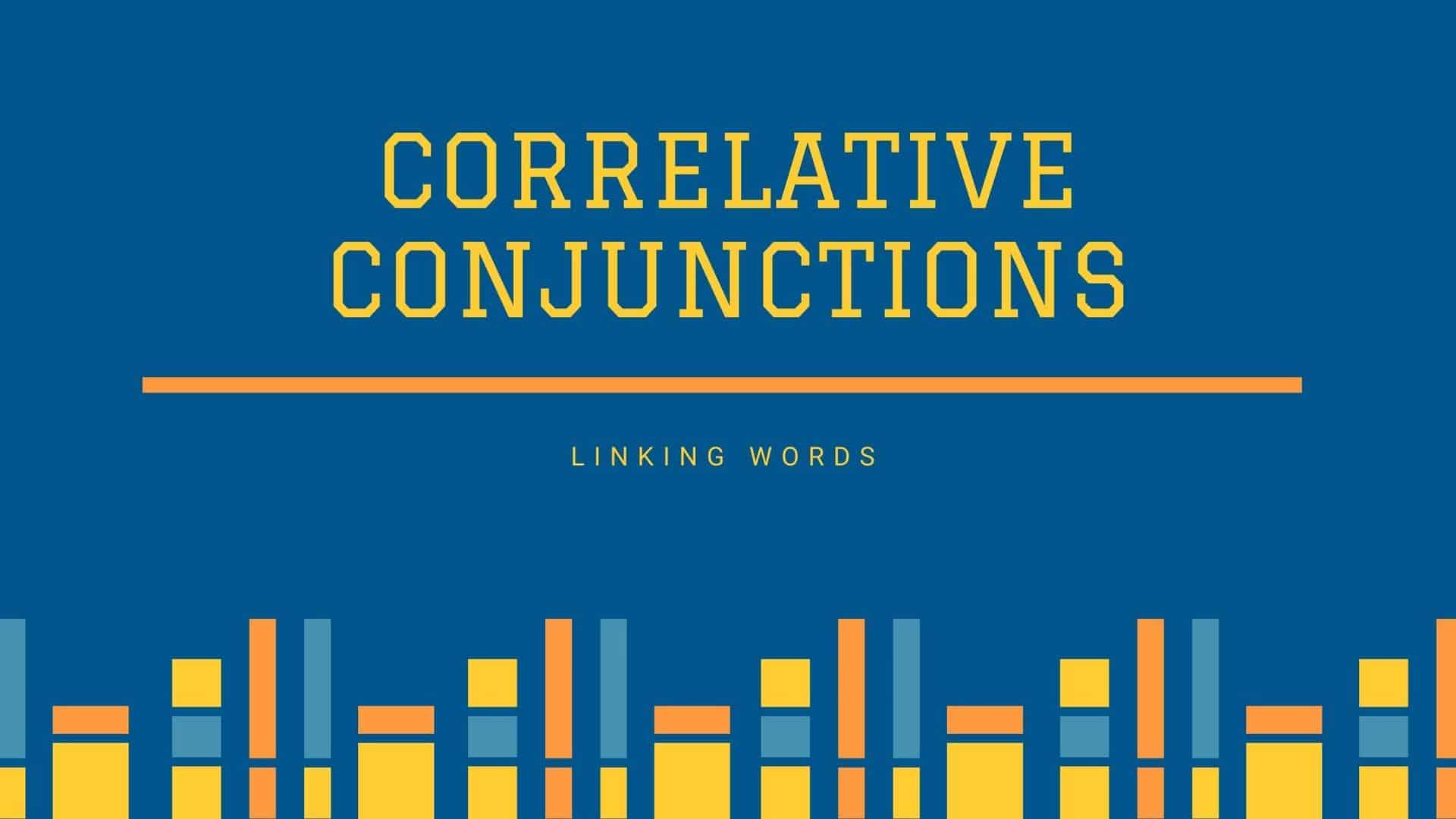What are Correlative Conjunctions?
Correlative Conjunctions, also called paired conjunctions, are conjunctions that always work in pairs. They are used to join words, phrases and independent clauses of equal importance and similar structure. Some of the most common Correlative Conjunctions are:
- Either…or
- Neither…nor
- Not only… but also
- Both…and
- not…but
- Whether…or
- No sooner…than
Functions of Correlative Conjunctions
Functions of Correlative Conjunctions are to join words, phrases and independent clauses of equal importance and similar structure.
Usage of some of the most common Correlative Conjunctions are given hereunder.
1.Either…or
We use Either…or when there are only two options. It emphasises the fact that there are only two options.
Examples:
- Let us go either for the cricket match or for the foot ball match.
- You can either stay in a hostel or come with us.
2.Neither…nor
We use neither…nor in order to negate two options.
Examples:
- Neither she nor her husband wanted to live together anymore.
- Neither Jill nor Jack wanted to play with John.
Subject-verb agreement (When Either…or and Neither…nor are used)
Note 1: When we use either or neither, the verb agrees with the second subject, NOT the first.
Examples:
- Either my sisters or my brother looks after my dog when I am on tour. (The verb “looks ” agrees with the second subject, “brother”)
- Either my brother or my parents keep my car when I go on a foreign tour. (The verb “keep ” agrees with the second subject, “parents.”)
Note 2 : When neither…nor is used to link two independent clauses, negative inversion (the reversal of the positions of subject and auxiliary verb)must be used.
Example:
Neither did he obey nor did he care.
Note 3 : In general, when we join two singular subjects with a correlative Conjunction, the verb that follows should be singular.
Examples:
- Neither Jack nor Jill has returned home yet.
- Not only John but also his friend is coming for dinner today.
3. Not only… but also
We use Not only… but also to give emphasis on an additional element in the sentence.
Example:
- The house is not only large but also beautiful.
- Not only did she wash the clothes but she also ironed them.
Note: When “not only “is used to start an independent clause, as in the second example ,there is negative inversion as in the case of neither…nor. When “but” begins the second independent clause, the subject comes in between “but” and “also”.
4. Both…and
We use ” both…and ” to emphasis on two elements that are true in the sentence. If we use the coordinating conjunction, that will be grammatically correct, but it will not bring the same emphatic effect.
Example:
- The house is both big and beautiful.
5. Not…but
We use “not…but” to indicate a contradiction, negating the first option and stressing the second option.
Example:
- The girl is not happy but excited.
6.Whether…or
We use “whether…or “to indicate doubt between two possible options.
Example:
- I am late; I don’t know whether I can catch the train that comes at 10 AM or not.
7. No sooner…than
“No sooner…than” is used to express that one thing happens immediately after another thing.
Example:
- No sooner had I reached the bus stop, than it started raining.
Punctuation
When we use a correlative conjunction to join two independent clauses,we separate the two clauses with a comma. The subject of the second clause is placed in between ” but” and “also”
Examples:
She not only cleaned the house , but she also cooked food for them.

Thank you very much this is very useful information.